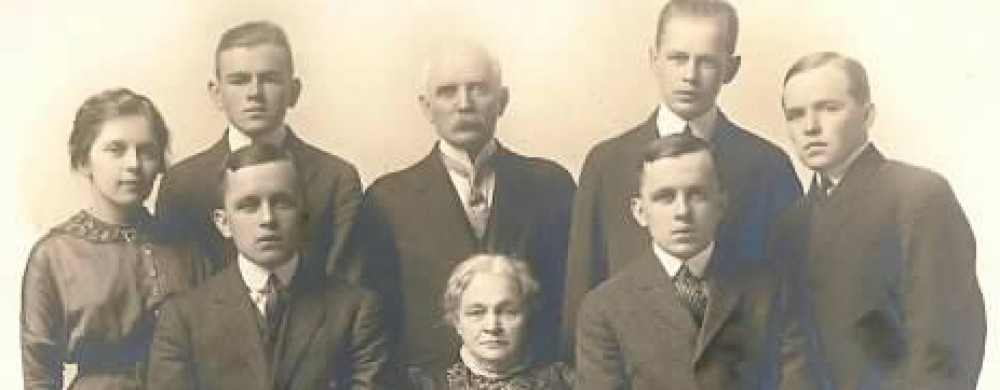When you investigate colonial families in southeastern Massachusetts, at some point, you will bump into Ebenezer Weaver Peirce (1822-1902). He was a Freetown son, an ardent military man, historian, and genealogist. I’m deeply indebted to him for his contributions to the New England Historical and Genealogical Register in the 1860s, which include transcriptions of grave markers, genealogies of his own Peirce family, and sketches of related Paine, Rounsevill and Davis families. I trust (but verify) his work because Peirce lived with the families he chronicled. Census records show these folks were his neighbors.
Peirce’s research and writing focused on the “Old Colony,” a term used to describe a region, once part of Plymouth Colony, home to native peoples for at least 10,000 years before Europeans settled in 1620, and bounded on three sides by the Atlantic Ocean. The area encompasses today’s Plymouth, Bristol and Barnstable counties. Ebenezer was a member of the Old Colony Historical  Society (founded in 1852), and is listed among its directors in 1883 and 1892.
Society (founded in 1852), and is listed among its directors in 1883 and 1892.
His reputation secured him a book commission from the remarkable Native American woman, Zerviah Gould Mitchell (1807-1898), whose struggle for property rights usurped by ‘the whites’ deserves to be more widely known. The 1878 collaboration, Indian History; Biography and Genealogy, Pertaining to the Good Sachem Massasoit of the Wampanoag Tribe, and His Descendants, is absolutely fascinating (read the book over at Archive.org).
While modern scholars have dismissed Peirce’s Indian History for its flawed methodology, Peirce’s Colonial Lists. Civil, Military and Professional Lists of Plymouth and Rhode Island Colonies 1621-1700, a formidable undertaking, remains an invaluable tool for New England research.
Peirce’s prose style isn’t the plodding and treacly stuff typical of the Victorian era, except when he recounts military experience. With Revolutionary War veterans in his Peirce family history, especially, he betrays sentimentality and hero worship.
I’d rather omit martial stuff entirely from my profile of Ebenezer’s profile. In fact, those so inclined can click to Wikipedia’s fine entry detailing his military career. However, on June 30,1862, when Ebenezer was 40 years old, the midpoint of his life, while he led Union Army troops at White Oak Swamp in Virginia, – Ebenezer’s right arm was shot off at shoulder.
For a proud man in his prime, losing the ability to perform the most mundane tasks: dressing, bathing, shaving, eating, – was a blow that would devastate most people. Yet, three months after the trauma, Ebenezer joined his 29th Massachusetts Infantry regiment at Harper’s Ferry (Virginia) on October 8, 1862. He continued to serve (with leave for illness) and did not officially resign until November 8, 1865.
An intriguing private life
While it’s clear Ebenezer had a strong will and drive, he didn’t pile up his accomplishments all alone; after June 1862, he wasn’t physically able. And his life involved others.
He and Irene Paine (1825-1900) had married at the end of 1849. They had three children, but only one son survived. What was it like when this husband and father returned home with a mutilated body and life-long disability? We can take Ebenezer and Irene’s divorce, a rare event then, as evidence that some relationships suffered.
But Ebenezer forged new relationships, too. He brought to Freetown from Virginia, Amanda Watts (abt 1833-1922), a former slave. She lived in and ran Peirce’s household until 1892, when he married Ida E. Gardner (1863-1945), a woman 40 years his junior. (Did she fall for those crazy sideburns, I wonder?)
And while we can only imagine how Ebenezer’s various domestic dramas played out over the years, we know one battle, between two women, ended up in a Fall River court.
Please stay tuned for Part 2…
…in which I’ll share some interesting details of Ebenezer Peirce’s life and the people in it, – including juicy newspaper accounts of a court case for assault and battery.
Notes, Sources & Resources:
- The image of Ebenezer W. Peirce (with crazy facial hair) is from the 1878 Indian History he wrote with Zerviah Gould Mitchell.
- NE Historic Genealogical Society (AmericanAncestors.org); New England Historical and Genealogical Register: Vol 19, Page 47 (Rounsevill);
RECORD: 1866, VOLUME:20 (1866), PAGE: 213; Posterity of William Davis, of Freetown | RECORD1861, VOLUME 15 (1861) PAGE 237 – A brief Sketch of the Early Branch of the Pain Family, Settled at Freetown, Bristol, Mass.
- Old Colony History Museum – http://www.oldcolonyhistorymuseum.org/
- Recollecting Nemasket: A Visit to Zerviah Gould Mitchell, 1891; http://nemasket.blogspot.com/2011/01/visit-to-zerviah-gould-mitchell-1891.html
